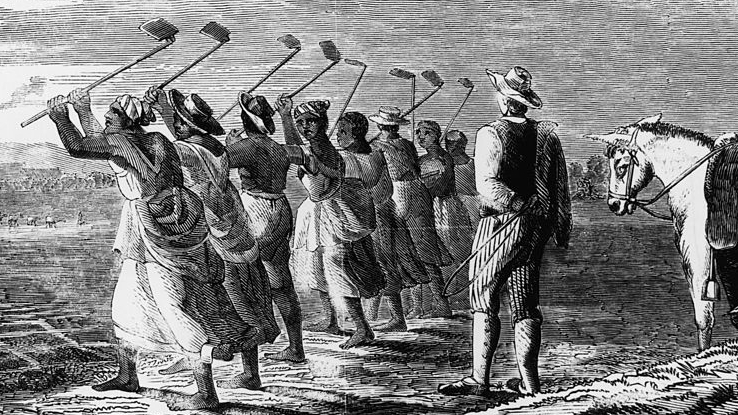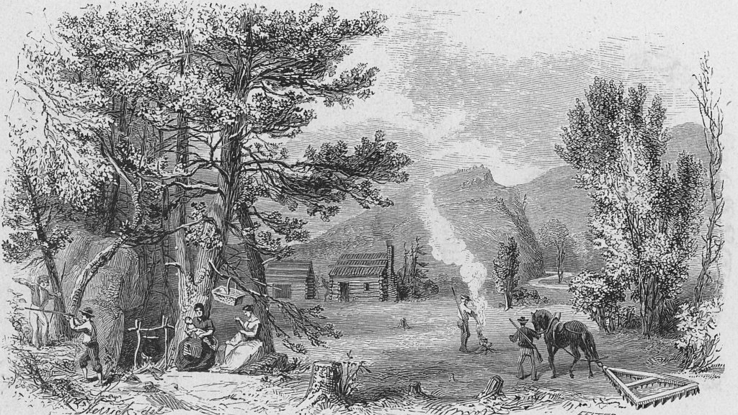Understanding the Controversial Early History of the Electoral College

The electoral college was created during the 1787 Constitutional Convention as a compromise between the competing interests of different states, which caused it to be controversial even in the time of the Founding Fathers. Factors as diverse as slavery and fears that the American people would only vote for regional presidential candidates all affected the electoral college’s creation. In the end, even many of the Founding Fathers weren’t entirely happy with the resulting deal, but it satisfied enough concerns on all sides to be used in presidential elections for the next two centuries and then some — all the way up to the present day.
Electoral College Basics
While it’s common to say that Americans vote for their president every four years, they technically vote for an elector. That elector usually votes for the presidential candidate who won the majority of votes in their state, although they don’t technically have to do so. While it’s extremely rare, there have been 165 “faithless electors” who voted for a different candidate than the one that won their state (or who cast a blank ballot) between the establishment of the electoral college and the 2016 presidential election.

There are 538 electors — one for each member of the Senate and House of Representatives plus three that were later added for Washington, D.C. Each state creates its own process for selecting electors, but they generally look for people who are likely to loyally vote for whoever wins their state’s vote. Current members of Congress and government employees are not allowed to be electors under the Constitution.
Needless to say, the electoral college is more complicated than just voting for the president outright. So why was it created?
Slavery and the Electoral College
An important reason for the creation of the electoral college was slavery. White Americans only made up around 60 percent of the South’s population, while they comprised a much higher portion of Northern states. Because slaves didn’t have the right to vote, that put Southern states at a disadvantage in the event of a popular vote for president. As a result, the South was opposed to a direct presidential election

The electoral college was proposed in part to placate the South’s objections and convince it to ratify the U.S. Constitution. It granted the South (and the rest of the country) voting power based on population regardless of whether the people in that state could actually vote — particularly slaves.
However, many delegates from Northern states were opposed to the South being given electoral votes for people it otherwise treated as property. As a result, the Three-Fifths Compromise was created, which granted the South electoral votes (and congressional representatives) for three-fifths of its enslaved population.
Slavery aside, different states also had different suffrage requirements. For instance, a greater portion of the population of Pennsylvania could vote compared to many Southern states and even some Northern ones, such as Massachusetts. The electoral college kept states that allowed more people to vote from having an advantage over those that let fewer people vote.
Independence of the Executive
The Founding Fathers were leery of creating a strong presidency after their experience with the king of England. However, they also wanted to make sure the new executive office was independent from outside influence. They didn’t want Congress to elect the president in case because it might have led to corruption and infighting, yet they were also reluctant to allow a popular election out of fears of what direction the masses might want to take the country in.

The electoral college also solved these concerns. By having electors be separate from congressmen, there was less opportunity for corruption. Giving states the ability to create their own criteria for choosing electors also meant that state legislatures had control over the process rather than handing it over entirely to the people.
The Size of the Country
Another issue that led to the creation of the electoral college was the sheer size of the country. While small compared to what it would someday become, the United States in 1787 was nevertheless a large country for its time, and one with poor infrastructure and only a very recent sense of national unity. Information took a long time to reach one end of the country from another, and people from different states often viewed each other as being foreign in a sense. Because of this, the Founding Fathers were concerned that people simply wouldn’t know anything about presidential candidates from other parts of the nation. “The extent of the Country,” said James Madison, “renders it impossible that the people can have the requisite capacity to judge of the respective pretensions of the Candidates.”

By selecting electors who were well-traveled and knowledgeable about politics, the Founding Fathers hoped to create protections against voters simply choosing whichever candidate was from their state. This is also why in the event that no candidate receives a majority of the vote, the House of Representatives elects the president, with each state receiving one vote. If every state only voted for its own candidate, congressmen could still choose a president.
Of course, the Founding Fathers didn’t anticipate how technological changes in the 19th and 20th centuries would make finding information on political candidates much easier. They also didn’t expect party politics to arise, which made it easy for common people to understand what politicians stood for just by knowing their party allegiance.
The Electoral College in Practice
While the Founding Fathers had many expectations for how the electoral college would work, many of them didn’t work out the way they had planned. Some delegates from small states, for instance, opposed both the popular vote and the electoral college out of fears that large states would dominate elections. However, in some ways, small states ended up benefiting greatly from the electoral college due to the minimum number of three (one representative plus two senators) that each one could have. For instance, Wyoming has nearly four times as many electoral votes per person as Texas.

At the same time, the electoral college also disadvantaged small states. Because of the Three-Fifths Compromise, Virginia ended up commanding 12 electoral votes, a quarter of the 48 needed to win after the Constitution was ratified in 1787. Politicians from the state went on to win eight of the first nine presidential elections, and large states continued to dominate ever after, with only three presidents — Zachary Taylor, Franklin Pierce and Bill Clinton — ever being elected from small states.
More than anything, the electoral college ended up prioritizing the votes of states with strong partisan divides. Today, large states like California and Texas have little power to affect presidential elections despite containing many voters who belong to both major parties, yet small states are also often ignored due to their small number of votes and the fact that most consistently favor one party or another. The electoral college instead encourages politicians to focus on states with nearly equal numbers of supporters from each party. Critics of the system cite this seemingly arbitrary outcome as one reason why the electoral college should be abolished.
However, because the electoral college would require a constitutional amendment to change and because it tends to favor one party or another at different points in time, it’s not clear if it’s likely to ever be replaced. For better and for worse, the electoral college is here to stay — at least for now.





